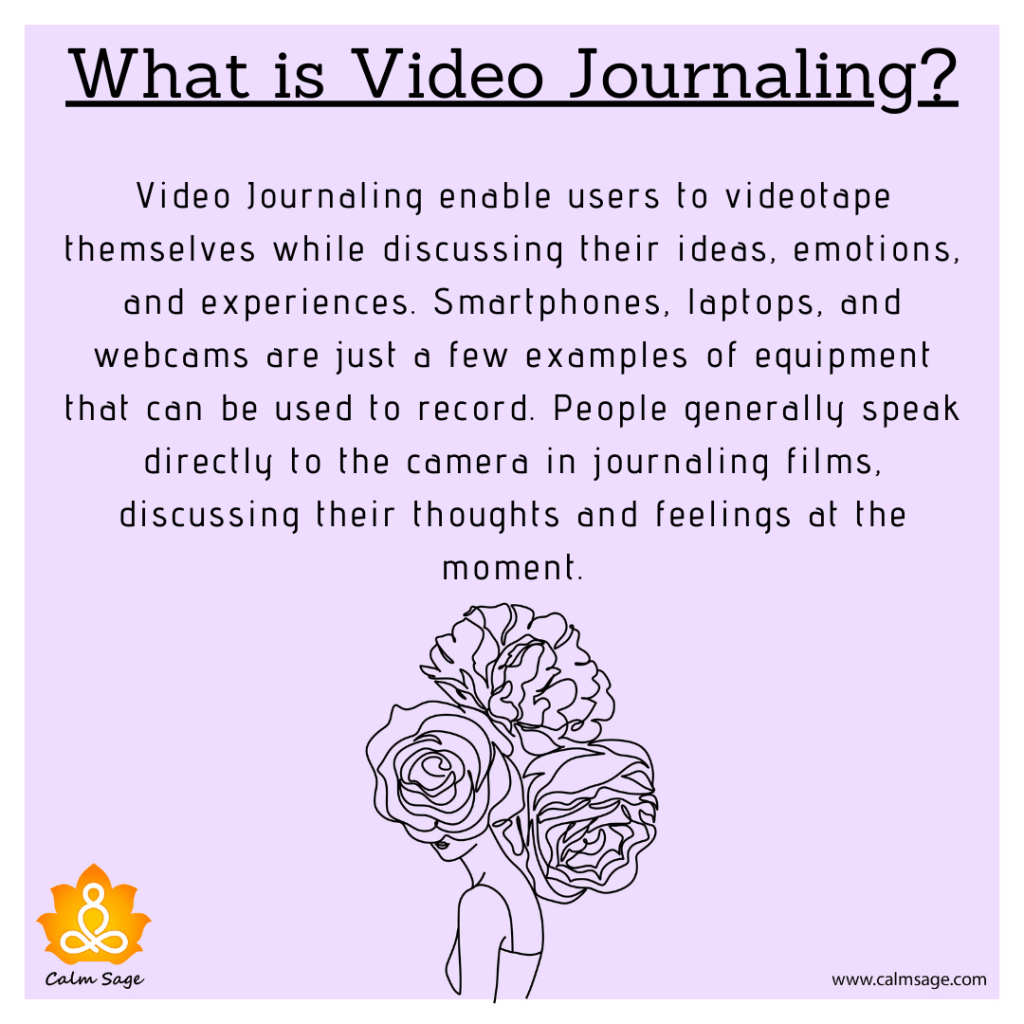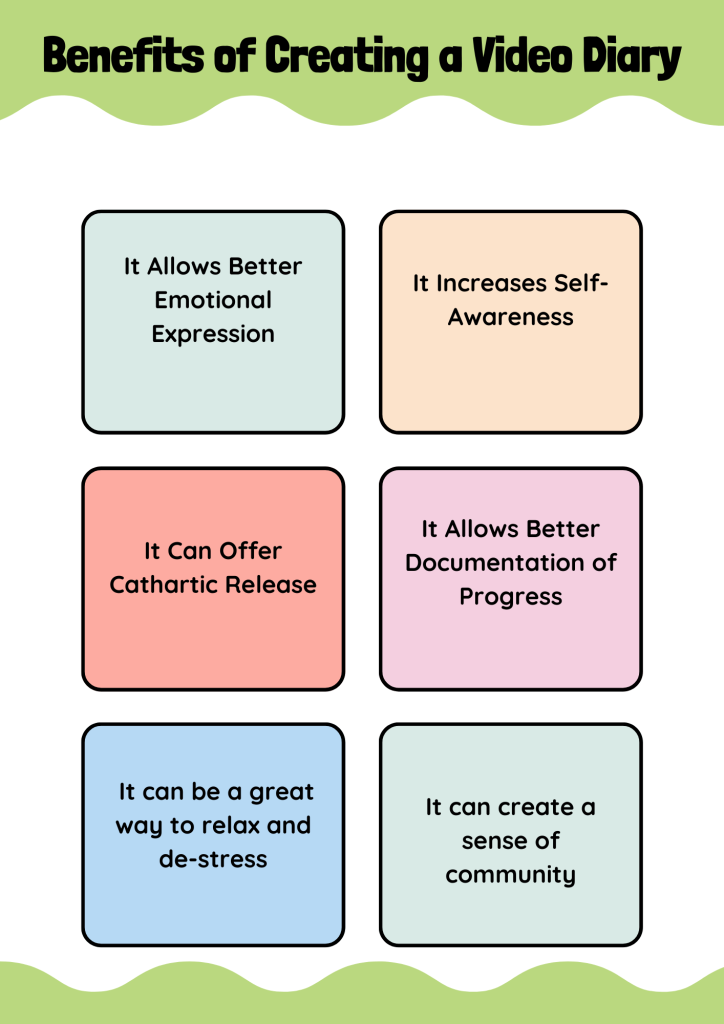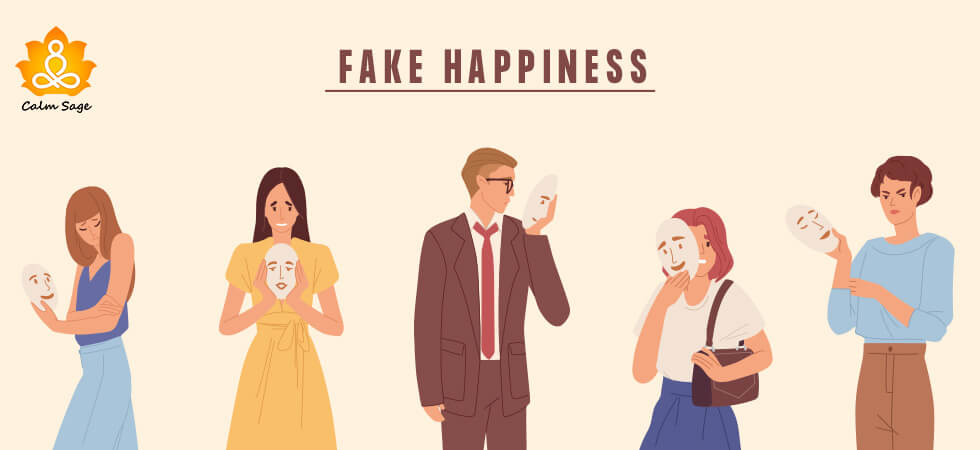Video Journaling For Mental Well-Being [With Tips to Begin Journaling!]

I bought a journal some time ago to work on my self-awareness and do some self-reflection, but the moment I would sit to write in it, my mind would go blank. After talking with my therapist about this, she suggested that instead of writing, I should focus on recording voice memos. I was intrigued and did my own research when I came across the concept of video journaling.
In our lives, when everything is conveniently available digitally, it’s no surprise that technology has found a way into our mental health practices. Amid the chaos and clamor of “living digitally”, traditional methods of self-introspection and self-reflection have taken a back seat.
Video journaling offers a fresh and dynamic approach to exploring our inner world, boosting self-awareness, and even working on our emotional resilience. In this age of selfies and social media, let’s make way for video journaling for mental well-being.
What is Video Journaling?
Well, simply put, video journaling or recording visual or even voice memos, is the act of recording your thoughts, feelings, and experiences on video. This practice is quite similar to traditional journaling as it, too, serves as a means of self-expression and reflection, but with an added element of visual and audio cues.

When I ask you to video journal, I ask you to use a camera to capture your innermost thoughts, instead of putting pen to paper. Video journaling is a contemporary approach to journaling that allows for a more immersive experience and form of self-expression.
Sounds quite fun, right? I mean, like me, you must also find it confusing to pen your thoughts in a journal. And I get that too; our mind works faster than our hands, so how can our hands catch up to our thoughts and pen everything as it occurs?
Well, if you find it hard to write about your thoughts, then making a video journal can be easy. All you have to do is set up your camera, press play, and just talk about your thoughts and feelings – with yourself!
Also Read: 55 Journaling Prompts For Self Discovery
The Benefits of Creating a Video Diary
In simpler terms, your video journal is your video diary – for your ears and eyes only, until you choose to share it with your therapist. Creating a video diary can have many benefits, such as;
1. It Allows Better Emotional Expression
A video journal can provide a platform for you to express yourself freely, without the constraints of the written language. Through facial expressions, body cues, and tone of voice, you can convey your feelings and emotions in a more nuanced and authentic way.
2. It Increases Self-Awareness
Another benefit of having a video diary is that watching yourself on video can give you better insights into your behaviors, patterns, and even thought processes. This increased self-awareness can aid your growth by pinpointing areas of improvement and further exploration.
3. It Can Offer Cathartic Release
When you are better able to articulate and verbalize your thoughts and emotions, it can almost be cathartic. With better expression of thoughts, you can release all pent-up emotions, stress, anxiety, and frustration. The act of vocalizing your concerns, feelings, and experiences can offer a sense of emotional freedom and relief.
4. It Allows Better Documentation of Progress
Over time, your video journal becomes a tangible record of your mental health journey. With a video diary, you can review past entries and track your progress. This can also help you know what achievements to celebrate and what are your recurring triggers and challenges that you can address.
5. It is Accessible
Unlike the traditional form of journaling, video diaries can be done anywhere, anytime. All you need is your cell phone, a quiet and comfortable place, and the ability to express yourself honestly and openly. That’s it! If you don’t have time to write down due to your busy lifestyle or if you can’t express yourself with words, then video journaling can be good for you.

How Does Video Journaling Work?
1. Set The Scene:
Like any video recording, find a quiet and comfortable place where you can feel at ease talking about your thoughts and feelings. Make sure there is good lighting and fewer distractions. This can ensure a conducive environment for self-reflection.
2. Begin Recording:
Once your scene is set, you’re all ready to begin your recording. Start by addressing the camera and introducing the time and date for better documentation. Take a few deep breaths and center yourself before you focus your attention on your thoughts and feelings.
3. Speak Your Mind:
The best part of video journaling is that there are no rules and restrictions. Allow yourself to speak freely and your thoughts to flow naturally. Express what comes to mind without judgment or censorship.
4. Reflect and Think:
You can use journaling prompts and questions to guide your self-reflection journey. Just make sure you use the right prompts to understand the highs and lows of your days.
5. Wrap it Up:
Now it’s time to conclude your reflection by summarizing your main takeaways or insights that you gained from your self-session. Don’t forget to express your gratitude for this opportunity to be able to talk about your feelings openly.
Tips to Create a Video Diary
1. It’s Best to Start Small
If you’re new to the concept of video journaling, then don’t feel pressured to record lengthy sessions. Begin small and with short sessions, and gradually increase the duration as you become more comfortable.
2. Be Consistent with Entries
Create a schedule for regular video journaling sessions. It could be daily, weekly, or even monthly, but make sure to be consistent. When you’re regular with your entries, only then you can reap the benefits of this practice and increase your self-awareness.
3. Don’t Hesitate to Experiment
When it comes to creating a video diary, there are no right or wrong ways. Experiment with different formats, styles, and prompts to find what works for you the best. Be open to adjusting your approach based on how your needs and preferences evolve with time.
4. Seek Support When Needed
Video journaling can be a good complementary practice to professional therapy, but it can’t remain a permanent one. If you’re struggling with your mental well-being, then reach out to a professional counselor or therapist for help, guidance, and support.
Wrapping Up…
In the end, video journaling offers a unique opportunity for an accessible and flexible approach to promote mental well-being. With the power of technology, you can engage in self-reflection, expression, and exploration in a more dynamic and personalized way. Whether it’s to increase your self-awareness, manage stress, or just document your progress, creating a video diary can act as a therapeutic tool.
So, grab your camera, press record, and start your video diary today. May this form of journaling help you rediscover yourself and reconnect with your goals.
Did you enjoy reading about how video journaling works and helps in your mental well-being journey? Let me know your thoughts about this contemporary practice in the comments below.
Take Care!
Next Read:




















